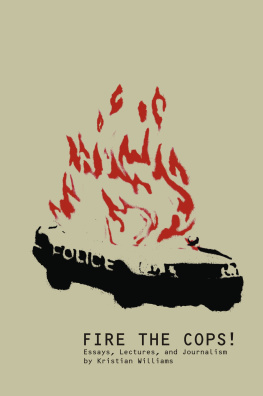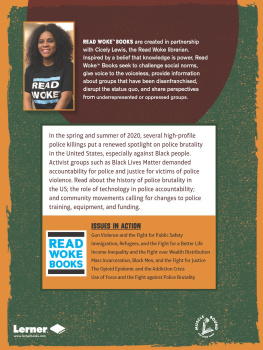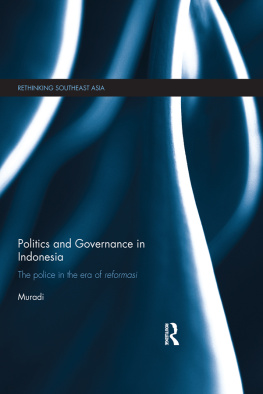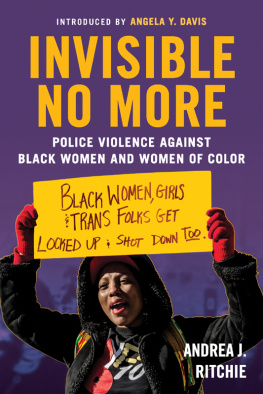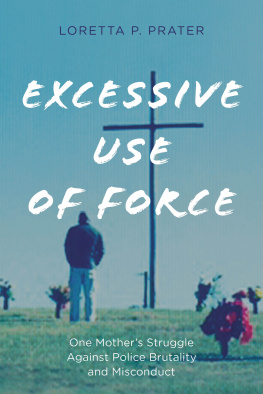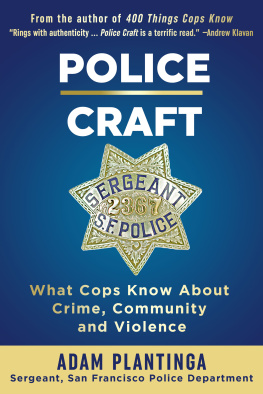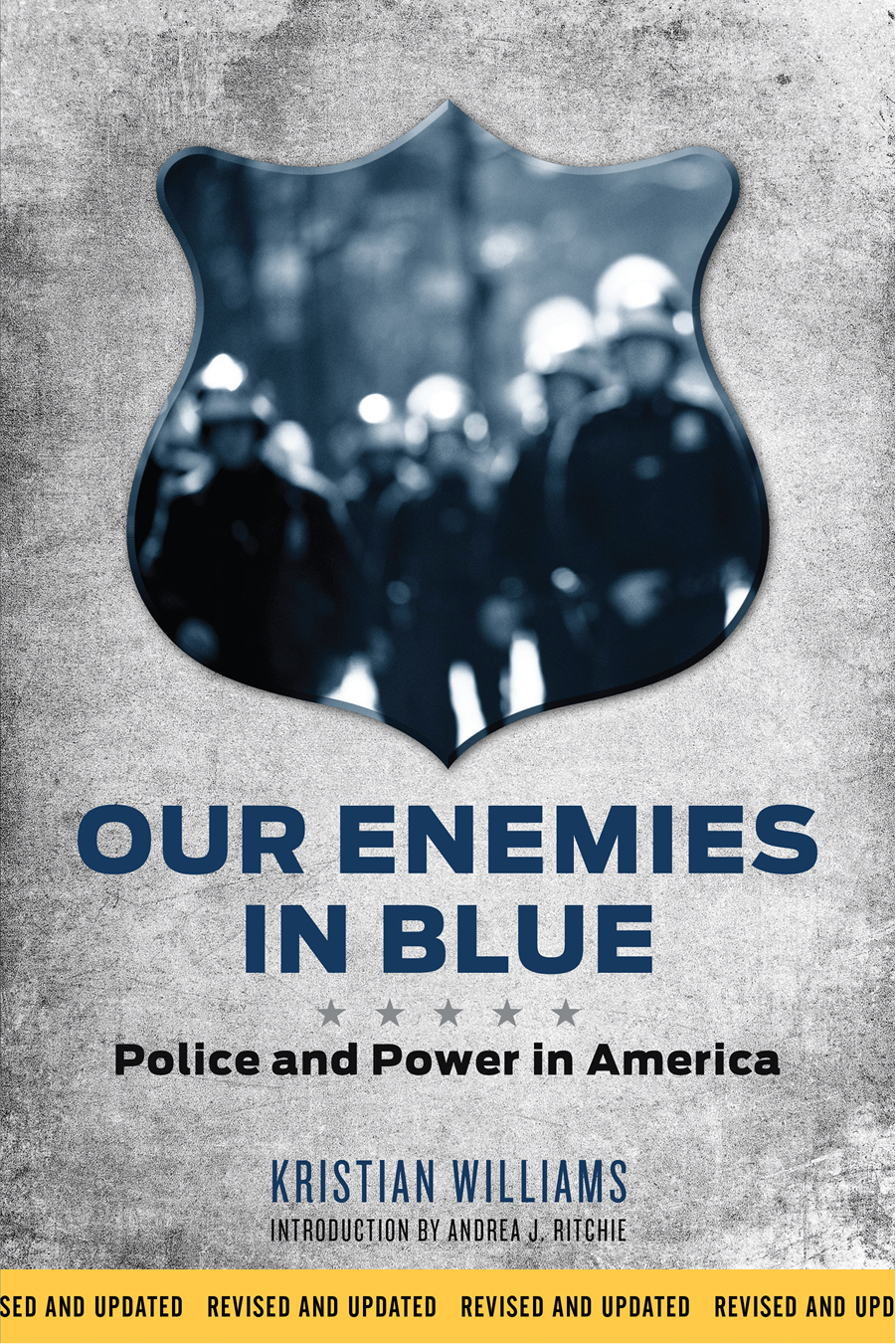Foreword: Police and Power in America
What are police for?
Everybody thinks they know. But to assume that the police exist to enforce the law or fight crime is akin to beginning an analysis of military policy with the premise that armies exist to repel invasions. The ends an institution pursues are not always the same as those it claims to pursue.
I begin, then, with a call for skepticism, especially about official slogans and publicly traded justifications. Let us focus less on what the police say they are doing and instead assess the institution based on what it actually does. We should ask, always, who benefits and who suffers? Whose interests are advanced, and who pays the costs? Who is protected and served? Who is bullied and brutalized? The answers will tell us something of the forces directing the police, both in specific circumstances and in the larger historical sense. They will also reveal the interests the institution serves and the ends it promotes.
This book discusses much of what is worst about the police. It describes their actions largely in terms of intolerance, corruption, political repression, and violence. The first chapter, Police Brutality in Theory and Practice, offers an overview of police violence, its prevalence, causes, and consequences. It is followed by a history of the modern police institution, beginning with The Origins of American Policing in Chapter 2. That section traces the lineage of our modern police back to the slave patrols and other earlier forms, while Chapter 3, The Genesis of a Policed Society, weighs the significance of the new institution and the changing role of the state. Chapters 4 and 5Cops and Klan, Hand in Hand and The Natural Enemy of the Working Classcontinue this examination with a look at the use of police to stifle the social ambitions of racial minorities (especially African Americans) and workers. The sixth chapter, Police Autonomy and Blue Power, discusses efforts to reform policing, especially during the twentieth century, and analyzes the relationship between reform movements and the emergence of the police as a political force. Then, Secret Police, Red Squads, and the Strategy of Permanent Repression and Riot Police or Police Riots? (Chapters 7 and 8) detail intelligence operations and crowd control strategies. Chapter 9, Your Friendly Neighborhood Police State, brings the discussion up to the present, focusing on current trends such as militarization and community policing. And the afterword, Making Police Obsolete, considers community-based alternatives to policing, especially those connected to resistance movements here and abroad.
Throughout, the focus is on police in their modern form, particularly in urban departments in the United States. Some discussion of earlier models will be featured as background, and conditions in other countries are sometimes described by way of comparison. Likewise, the mention of other law enforcement authoritiesfederal agencies, county sheriffs, private guards, and the likewill be unavoidable to the degree that they influence, resemble, or take on the duties of the municipal police.
As the narrative progresses, several related trends become discernible. The first is the expansion of police autonomy and the subsequent growth of their political influence. The second is the continual effort to make policing more proactive, with the aim of preventing offenses. Related to each of these is the increased penetration of police authority into the community and into the lives of individuals. These trends are related to larger social conditionsslavery and segregation, the rise and fall of political machines, the creation of municipal bureaucracies, the development of capitalism, and so on. It is argued, in short, that the police exist to control troublesome populations, especially those that are likely to rebel. This task has little to do with crime, as most people think of it, and much to do with politicsespecially the preservation of existing inequalities. To the degree that a social order works to the advantage of some and the disadvantage of others, its preservation will largely consist of protecting the interests of the first group from the demands of the second. And that, as we shall see, is what the police do.
Robert Reiner claims that [to] a large extent, a society gets the policemen it deserves. It is hard to know whether Mr. Reiner is extremely optimistic about the police or extremely cynical about society. But undeniably, the history of our society is reflected in the history of its police. Much of that history clashes with our nations patriotic self-image. The history of Americas police is not the story of democracy so much as it is the story of the prevention of democracy. Yet there is another story, an ever-present subtextthe story of resistance. It, too, drives this narrative, and if there is a reason for hope anywhere in this book, we may find it hereamidst the slave revolts, strikes, sit-ins, protest marches, and riots.
Preface, 2014
In the summer of 2014, as I was working on the revisions for this new edition, rioting erupted in a Midwestern suburb. The incident that sparked the unrest was, in most respects, sadly typical. A white cop confronted a black teenager over a trivial violation of the lawliterally, an everyday occurrence. And, as has happened many times before, at the end of the encounter, the young man was dead.
Michael Brown had been walking in the street with a friend when police confronted them. Police say that Brown attacked Officer Darren Wilson and tried to take his gun, but witnesses insist that he had his hands in the air when he was fatally shot. Police also note that Brown had stolen some cigars from a convenience store a few minutes earlier, though Officer Wilson did not know that at the time. What is indisputable is that Wilson shot and killed Brown, and that Brown was not armed.
This story was painful, and familiar. In fact the only reason we know these detailsthe reason it is a story and not simply a statisticis because of what happened next: The people of Ferguson, Missouri fought back.
Suburban Warfare
Officer Darren Wilson shot and killed Michael Brown on August 9, 2014. The next night, August 10, marked the beginning of a cycle of antagonism and escalation, with police in riot gear and crowds looting stores. By August 11, cops were firing rubber bullets and tear gas. Soon the crowds were battling them with rocks, bricks, bottles, firebombs, and occasional gunfire. The effect, as USA Today described it, was a city turned war zone.
The police response surely helped to inflame the situation. One resident told a reporter: When I see a cop in riot gear, first thing I think is, Riot. When I see someone that looks like theyre ready to fight me, Im going to put up my fists.
The cops wore camouflage fatigues and body armor; some carried assault rifles, even aiming them at protestors. They blocked off streets with armored cars, set up snipers nests, and filled middle-class neighborhoods with tear gas. In an effort to de-escalate, the Missouri State Highway Patrol took over crowd control. Captain Ron Johnson, a Black man from the area, expressed sympathy with the demonstrators and promised not to use tear gas; but faced with ongoing rioting, his officers did so regardless. Soon the governor imposed a curfew and deployed the National Guard. Amnesty International sent observers and called for an investigation into the police action. Navi Pillay, the UN High Commissioner for Human Rights issued a statement condemn[ing] the excessive use of force by police, call[ing] for the right of protest to be respected, and accusing the United States of practicing apartheid.


